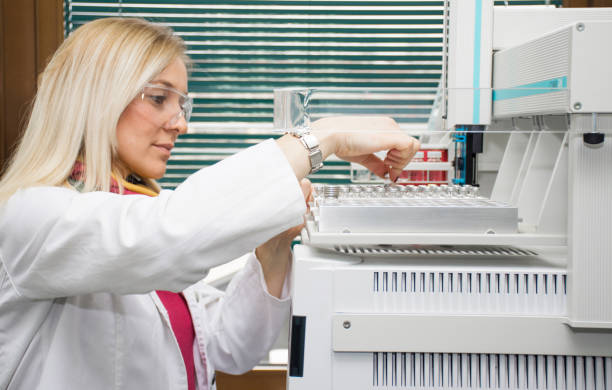VINYL ACETATE

Vinyl acetate latices are widely used in adhesives. Safe Home offers a few kits that provide drinking water testing for Vinyl acetate in city and well water supplies.
Parameter Type: Drinking Water Testing for Volatiles
Parameter Name: Vinyl acetate
What it is and Where it Comes From:
Vinyl acetate is an organic compound with the formula CH3CO2CH=CH2. This colorless liquid is the precursor to polyvinyl acetate and ethene-vinyl acetate copolymers, important industrial polymers. Vinyl acetate is prepared from ethylene by reacting it with oxygen and acetic acid over a palladium catalyst. Vinyl acetate latices are widely used in adhesives. One of the most familiar is Elmer’s Glue. Vinyl acetate adhesives are used in packaging applications such as shipping boxes and bags, food containers, envelopes, tapes, and as binders for paper, plastics, and foils. Drinking water testing gives you several benefits like peace of mind, identifying contaminants in your water, and insight into health concerns. Safe Home offers Laboratory drinking water testing kits for Vinyl acetate, allowing you to collect your water sample and ship it directly to our EPA-Certified Laboratory. This platform of drinking water testing for Vinyl acetate will give you an accurate level based on the lowest level of a parameter our instruments can detect (Method Detection Level). Safe Home drinking water testing for volatiles can be used for city and well water supplies. Drinking water testing should be done any time you notice a significant change in your water quality.
Health Effects:
No information is available on the reproductive, developmental, or carcinogenic effects of vinyl acetate in humans. In rats exposed to vinyl acetate in drinking water, an increased tumor incidence (including neoplastic nodules of the liver, adenocarcinomas of the uterus [in females], and C-cell adenomas or carcinomas of the thyroid) was reported. However, there are many limitations to this study. In another drinking water study, no treatment-related tumors were observed in rats. Reduced body weight gain was reported in study of rats exposed to vinyl acetate in their drinking water; no effects on reproductive performance were noted. No information is available on the carcinogenic effects of vinyl acetate in humans. No medical test is currently available to measure vinyl acetate in the blood, urine, or body tissues. Measurement of metabolites are not useful for showing whether exposure has occurred.
Solutions to Contaminant Levels:
After drinking water testing, how can vinyl acetate be reduced? A filter with granular activated carbon (GAC) is a proven option to remove certain chemicals, particularly organic chemicals, from water. GAC filters also can be used to remove chemicals that give objectionable odors or tastes to water such as hydrogen sulfide (rotten eggs odor) or chlorine. Reverse osmosis is a process that removes foreign contaminants, solid substances, large molecules, and minerals from water by using pressure to push it through specialized membranes. Here’s how reverse osmosis works. Unlike osmosis, which is a passive process, reverse osmosis requires external force (pressure) to work. Pressure is applied to a highly concentrated solute solution, such as salt water, to pass through a membrane to a lower concentrate solution. The membrane allows water to flow through but blocks out larger molecules, like contaminants. The reverse osmosis process leaves higher concentrations of solute on one side and only the solvent, or freshwater, on the other. Who do I need to contact to find out more information about water quality in my area? Every community water supplier must provide an annual report to its customers, known as a Consumer Confidence Report (CCR). The report provides information on your local drinking water quality, including the water’s source, contaminants found in the water, and how consumers can get involved in protecting drinking water. How often does the local public water system preform drinking water testing? Frequency of drinking water testing depends on the number of people served, the type of water source, and types of contaminants. Certain contaminants are tested more frequently than others, as established by the Safe Drinking Water Act. You can find out about levels of regulated contaminants in your treated water for the previous calendar year in your annual Consumer Confidence Report (CCR).


